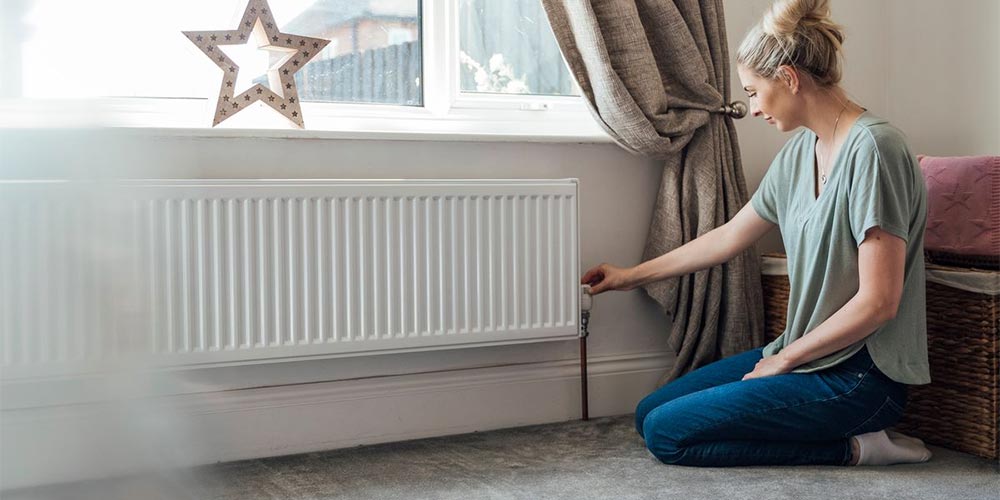
In most homes, radiators are placed on the inside of external walls and the heat emitted from the rear of the radiator is absorbed into the wall and escapes into the street. Can installing foil behind your radiators really stop heat escaping?
If you think that you are not getting the most efficient heat benefits from your radiator, sheets of reflective foil could be the answer.
Why do you need to install radiator foil?
Radiator foil is a very simple principle that can stop heat loss in your home. The foil works by reflecting the heat back into the room using the reflective surface, rather than being lost due to poor radiator placement or losing the heat via absorption into the walls. It is most effective if you have:
- Thin walls
- Single glazing
- A poorly insulated home
Radiator foil is a cost-effective and quick way to boost the heat in your home. The benefits of installing radiator foil will be a home that heats more efficiently and keeps your home warmer for longer, meaning less energy wasted and lower bills.
Why you should not use standard kitchen tin foil
You should not use kitchen foil to reflect heat from your radiators. Approved radiator reflective foil stays shiny and flat, is treated to prevent oxidation, and is approved and tested to do its job effectively. Standard kitchen foil should not be used as a radiator reflector because:
- It is not approved or tested for radiator use
- Quality can vary greatly from each supplier
- It will crinkle, tear and crease easily
- It oxidises over time which reduces its reflectiveness
How do you install radiator foil? (a step-by-step guide)
One of the benefits of installing radiator foil is that it is very simple. You won’t have to use a lot of your energy to save energy! You can easily do it yourself at home and there are many tools, kits and adhesives on the market that make it easy and affordable. The packs will come with the clips, joining tools, and foil sheets included.
Here is a step-by-step guide to installing radiator foil:
- Step 1: Locate the fixings on the back of your radiator and measure the distance between them
- Step 2: Cut your radiator reflect sheet to size using scissors
- Step 3: Fold the top of the sheet over about 1cm to attach the clips
- Step 4: Slide the clips on and ensure there is enough space on each side to attach the clips to the radiator fixings
- Step 5: Once the clips are secured, fold the foil over again to ensure it won’t unfold.
- Step 6: You can now drop the sheet into place. It should not be visible from the front of the radiator
Tip: If you have radiator covers over each radiator, radiator foil is even more essential as they cause heat to be pushed to the exterior wall even more.
More ideas to make your radiators more efficient
To save the most energy, you need to make your heating systems as efficient as possible. This can be with insulation, upgraded windows or regular boiler services.
When it comes to radiators, as well as foil, there are other ways to make your radiators more efficient.
Furniture too close to radiators
If you have a large piece of furniture in front of your radiator, it will block the heat from circulating around the room.
Large furniture can also absorb the heat from the radiator. Making sure your radiators are not blocked in it will help them to heat your home more effectively.
Curtains that block the heat
If you have a radiator under a window, long, heavy curtains can block heat from entering the room. Keeping your curtains closed will help to keep the heat in the room, but change them for shorter curtains that do not cover the radiator, so you don’t lose any heat.
Choosing thermal curtains will also help to keep the heat inside your home.
Bleeding the radiator
To make sure your radiators work efficiently, you should bleed them regularly. One of the easiest ways to know that your radiators need bleeding is a discrepancy between the temperature at the top and the bottom of the radiators.
Bleeding a radiator releases any trapped air meaning hot water will be able to fill the entire radiator so it can get hot all over.
